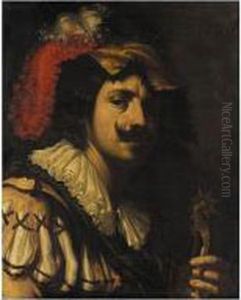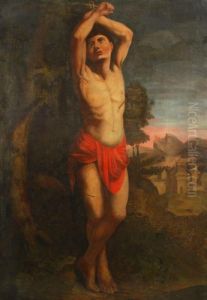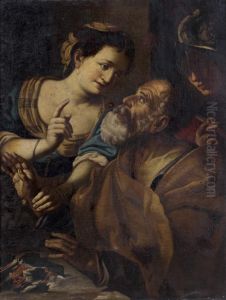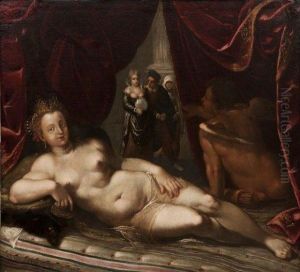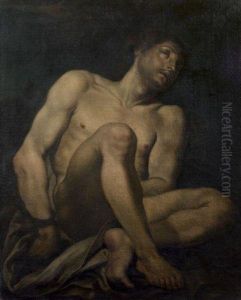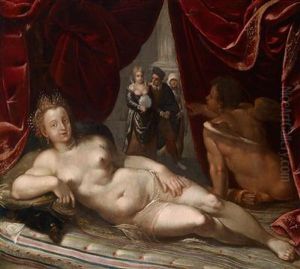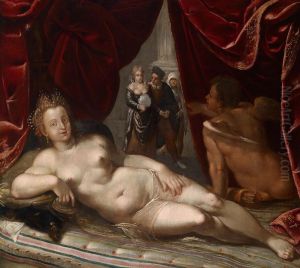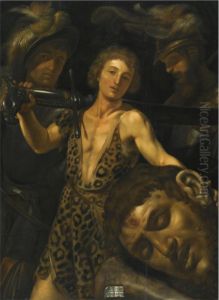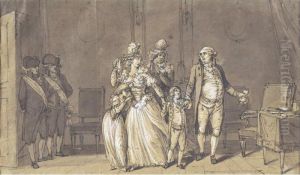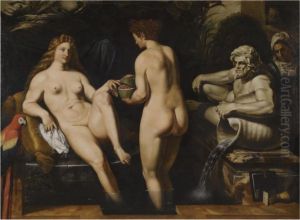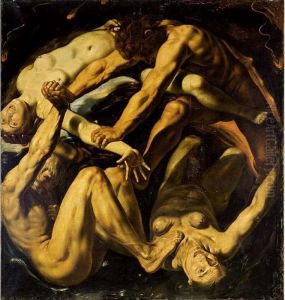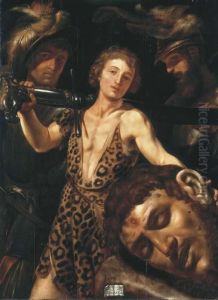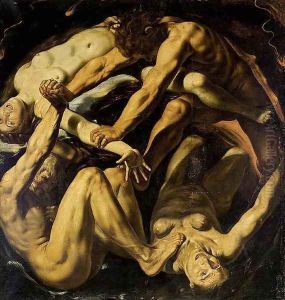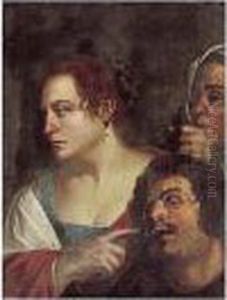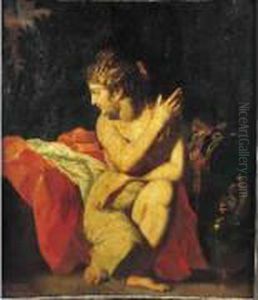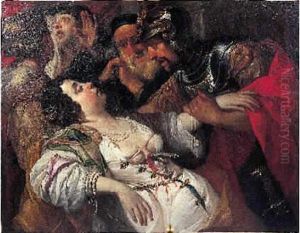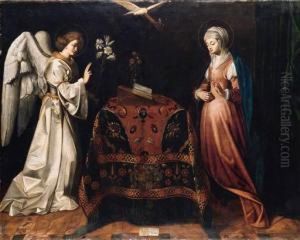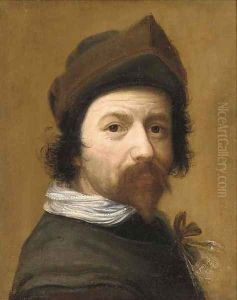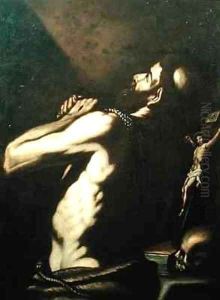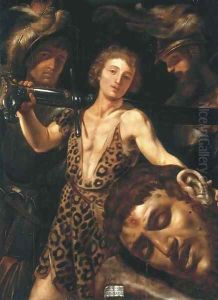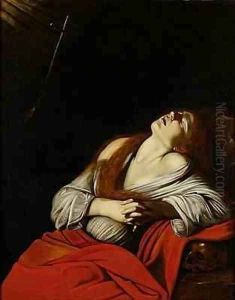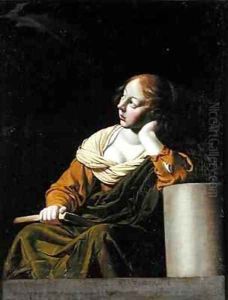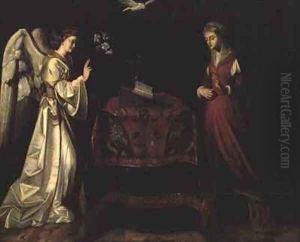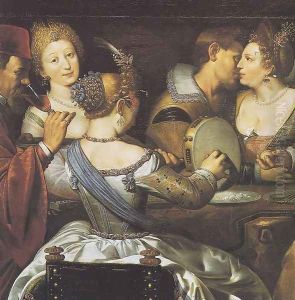Ludovicus Finsonius (see FINSON, Louis) Paintings
Ludovicus Finsonius, also known as Louis Finson or Ludovicus Finsonius of Bruges, was a Flemish Baroque painter active primarily in France and Italy in the late 16th and early 17th centuries. Born in Bruges in 1575, Finson was part of the wave of Northern European artists who explored and contributed to the artistic developments in Southern Europe during this period.
Finson is known for his strong use of color and his ability to blend Flemish painting techniques with the more vigorous and dramatic Baroque style that was emerging in Italy. His work shows the influence of Caravaggio, whom he may have known personally during his time in Naples. Indeed, Finson was responsible for owning and copying several of Caravaggio's works, helping to spread the Italian master's influence throughout Europe.
In France, Finson worked in Aix-en-Provence and Marseille. His presence in France is documented from around 1600, and he contributed to the local art scene through his portraits and religious compositions. In 1607, he moved to Italy and settled in Naples, a vibrant artistic center where Caravaggio's presence had left a substantial impact.
Finson's works from his Italian period show a greater sense of drama and naturalism, characteristics that were hallmarks of Caravaggio's style. Among his known works are the 'Annunciation' and 'Martyrdom of Saint Sebastian.' He also collaborated with another Flemish painter, Abraham Vinck, on several compositions.
Unfortunately, Finson's life was cut short when he died in Amsterdam in 1617, after returning to the Low Countries. Despite his relatively brief career, Ludovicus Finsonius left behind a body of work that illustrates the fertile cross-pollination of artistic ideas between the North and South of Europe during the Baroque period. His legacy is seen in the spread of Caravaggesque painting across Europe and in the works of other artists he influenced.
